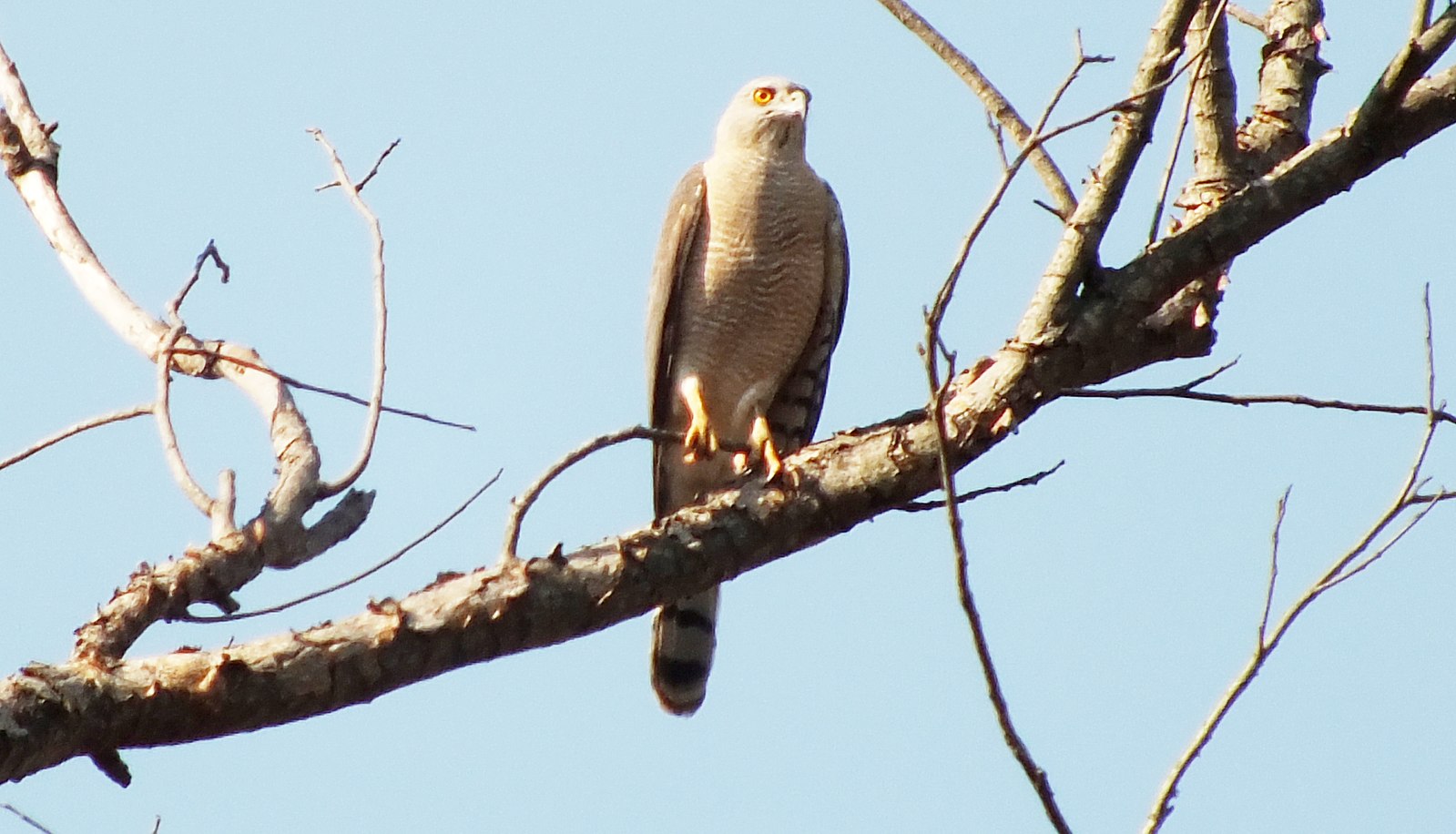The Shikra, also known as the Little Banded Goshawk or the Indian Sparrowhawk, is a small but powerful bird of prey found in south Asia and sub-Saharan Africa. Its lifespan is typically from 2.5 to 7 years, although some individuals may live longer in captivity or under favorable conditions in the wild.
The Shikra’s Lifespan: A Closer Look
The Shikra’s lifespan is influenced by various factors, including its habitat, diet, and environmental conditions. In the wild, the average lifespan of a Shikra is around 2.5 to 7 years. However, some individuals have been known to live up to 10 years in captivity or under exceptional circumstances in their natural habitat.
Factors Affecting the Shikra’s Lifespan
-
Habitat: The Shikra is an adaptable bird, found in a variety of habitats, including forests, farmland, and urban areas. The quality and availability of its habitat can significantly impact its lifespan. Shikras living in protected areas or well-managed ecosystems tend to have longer lifespans compared to those in degraded or fragmented habitats.
-
Diet: The Shikra’s diverse diet, which includes rodents, squirrels, small birds, reptiles, insects, and even carrion, plays a crucial role in its survival and longevity. A balanced and abundant food supply can contribute to the Shikra’s overall health and lifespan.
-
Environmental Conditions: Factors such as climate, weather patterns, and the presence of predators can also influence the Shikra’s lifespan. Shikras living in areas with stable environmental conditions and low predation risk tend to have longer lifespans.
-
Breeding and Reproduction: The Shikra’s breeding season in India is from March to June, during which the birds build nests, lay eggs, and raise their young. The energy and resources required for these activities can impact the Shikra’s lifespan, especially in the case of older individuals.
-
Human Interference: Threats such as habitat degradation, insecticide use, and electrocution on power lines can negatively affect the Shikra’s lifespan. Conservation efforts and responsible land management practices are crucial for protecting the Shikra’s population and ensuring its long-term survival.
Shikra Lifespan in Captivity vs. the Wild
 Image source: SHIKRA by Shiv’s fotografia
Image source: SHIKRA by Shiv’s fotografia
While the average lifespan of a Shikra in the wild is 2.5 to 7 years, individuals in captivity may live significantly longer. In controlled environments, such as zoos or rehabilitation centers, Shikras can live up to 10 years or more.
The key factors that contribute to the extended lifespan of Shikras in captivity include:
-
Consistent Access to Food: Captive Shikras have a reliable and abundant food supply, ensuring they receive the necessary nutrients for their health and longevity.
-
Veterinary Care: Captive Shikras have access to regular veterinary check-ups and medical treatment, which can help prevent or manage health issues that may arise.
-
Reduced Predation Risk: In captivity, Shikras are protected from natural predators, reducing the risk of injury or death from attacks.
-
Controlled Environment: Captive Shikras live in a controlled environment with stable temperatures, humidity, and other factors that can contribute to their overall well-being and longevity.
Shikra Lifespan in the Wild: Challenges and Adaptations
In the wild, Shikras face a variety of challenges that can impact their lifespan, including:
-
Habitat Loss and Degradation: The Shikra’s adaptable nature allows it to thrive in various habitats, but it is not immune to the effects of habitat loss and degradation. Deforestation, urbanization, and agricultural expansion can reduce the availability of suitable nesting sites and food sources, ultimately affecting the Shikra’s lifespan.
-
Prey Availability: The Shikra’s diverse diet is crucial for its survival, but fluctuations in prey populations can make it difficult for the bird to find a consistent food supply. This can lead to periods of food scarcity, which can negatively impact the Shikra’s health and lifespan.
-
Predation: Shikras are preyed upon by larger birds of prey, as well as some mammals and reptiles. Avoiding predators and successfully defending their nests and young can be a significant challenge for Shikras, affecting their overall lifespan.
-
Environmental Stressors: Extreme weather conditions, such as prolonged droughts or heavy rainfall, can also take a toll on the Shikra’s lifespan. These environmental stressors can disrupt the bird’s breeding patterns, food availability, and overall health.
Despite these challenges, the Shikra has evolved various adaptations to increase its chances of survival and longevity in the wild. These adaptations include:
- Keen Eyesight and Agility: The Shikra’s acute vision and agility allow it to effectively hunt and capture a wide range of prey, ensuring a reliable food source.
- Nesting Behavior: The Shikra’s ability to build sturdy nests in trees helps protect its young from predators and environmental threats.
- Territoriality: Shikras are known to be territorial, defending their hunting grounds and nesting sites from competitors, which can contribute to their survival and longevity.
Conservation Efforts and the Shikra’s Future
The Shikra is not currently listed as an endangered species, with a population of over a million individuals across its range. However, it faces various threats that can impact its long-term survival and lifespan.
Conservation efforts, such as those undertaken by organizations like The Peregrine Fund, are crucial for protecting the Shikra and its habitat. These efforts include:
-
Habitat Preservation: Protecting and restoring the Shikra’s natural habitats, such as forests and farmlands, can ensure the availability of suitable nesting sites and food sources.
-
Reducing Human-Wildlife Conflict: Addressing issues like electrocution on power lines and the use of harmful pesticides can help mitigate the threats posed by human activities.
-
Monitoring and Research: Ongoing monitoring and research on the Shikra’s population, behavior, and habitat requirements can inform conservation strategies and help ensure the species’ long-term survival.
-
Public Awareness and Education: Educating the public about the importance of the Shikra and the need for its conservation can foster a greater appreciation for the species and support for conservation efforts.
By implementing these conservation measures, we can help ensure that the Shikra continues to thrive and maintain its remarkable lifespan in the wild for generations to come.

